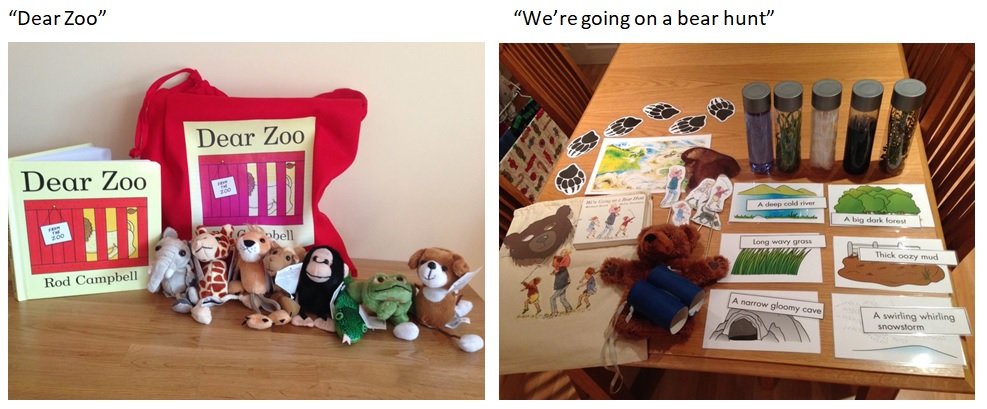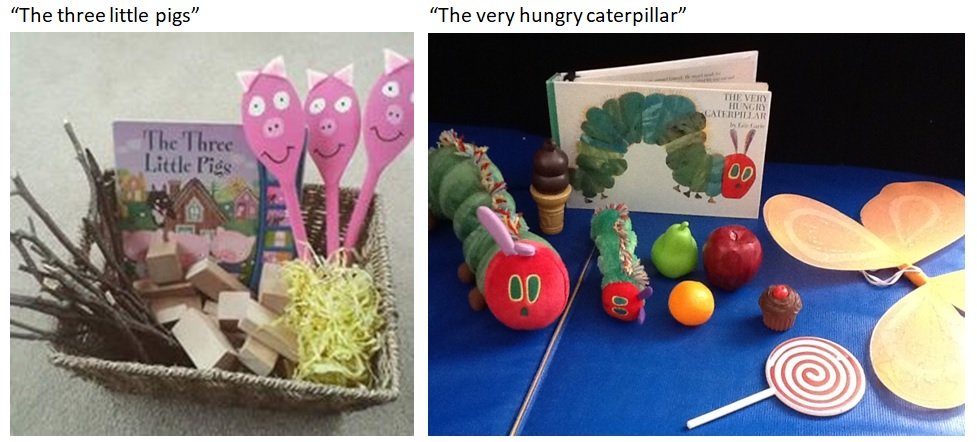This activity will help:
- develop your child’s attention and listening skills
- develop your child’s language skills
- develop your child’s vocabulary of everyday objects
- develop your child’s social skills e.g. turn-taking, sharing
Creating a ‘Story sack’ for your child’s favourite book(s) can make story time more interactive and multi-sensory.
Props can be used help tell each part of the story. These ‘props’ can be toys, objects, noises or textures to feel – anything that fits with the story!
This interactive and multi-sensory approach can help children to participate during story time. This will allow reading to be an exciting and creative shared experience between you and your child.
Creating a story sack
You can buy a ready made story sacks but it is much more fun to make your own!
Story Sacks usually consist of:
- A sack (a bag or pillow case works well!)
- A book
- Props to help tell the story
There are three main parts of a story that can be represented:
- Character (e.g. the hungry caterpillar toy / craft model / picture)
- Setting (e.g. outside: leaves / grass / twigs)
- Event (e.g. different types of food for the caterpillar to eat)
When making the Story Sack, think about how to engage all of your child’s senses. Think about noises that can be heard in the story, or how things might feel (rough sand, shiny water). Think about how to involve your child in the story. They could be splashed with magic dust, taste the three bears porridge, build a house made of bricks or hide underneath a blanket.
Video examples of how to use story sacks
There was an old lady who followed a fly; https://www.youtube.com/watch?v=HfF_6OOfbII
Dear zoo; https://www.youtube.com/watch?v=dlCgWYk37zI
Examples of story sacks:





